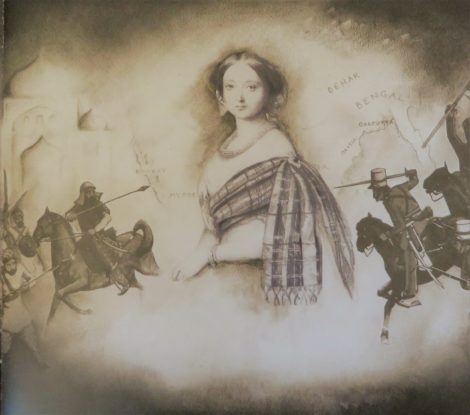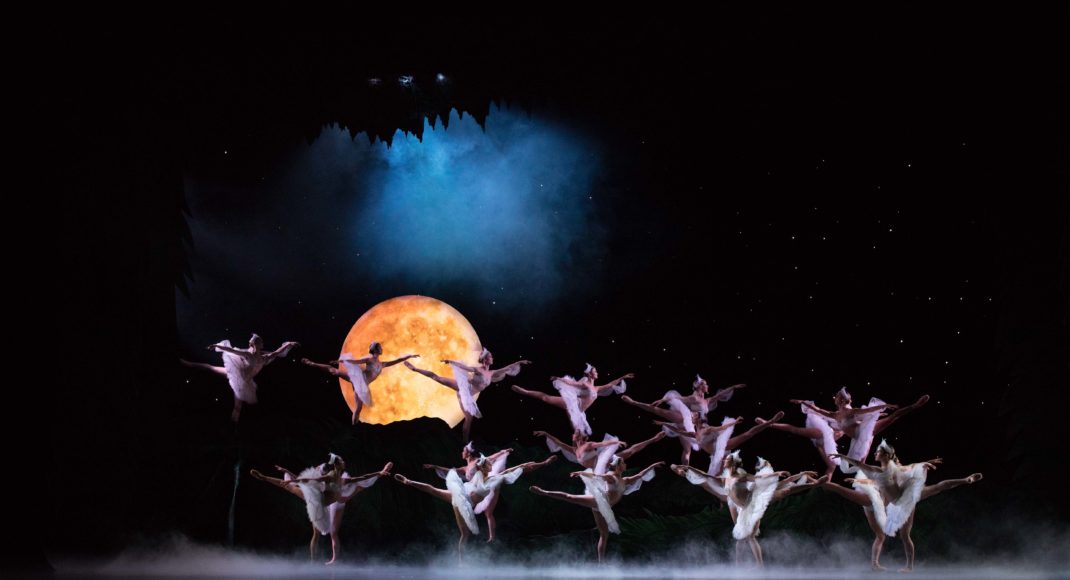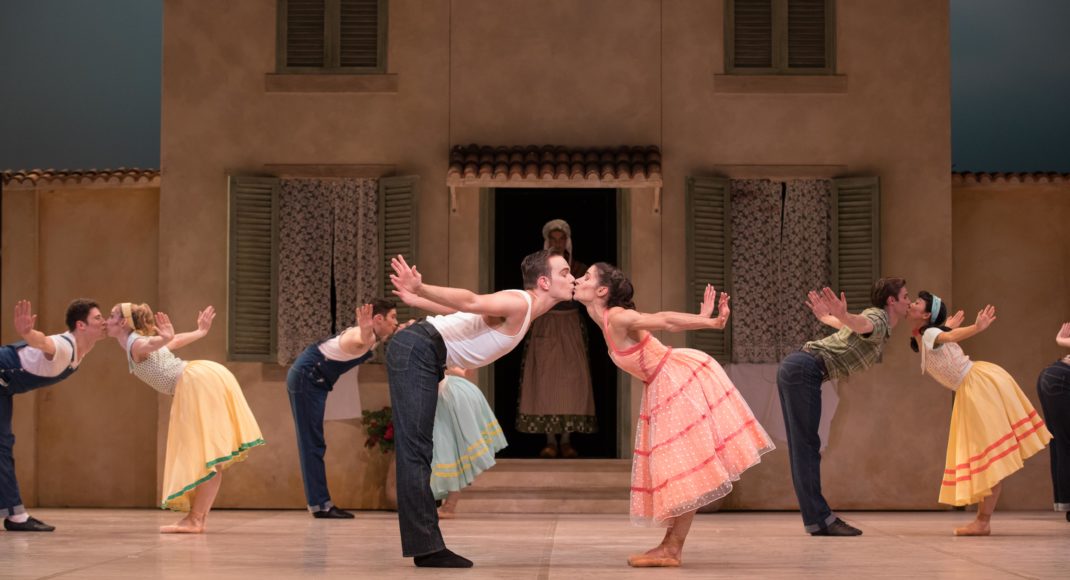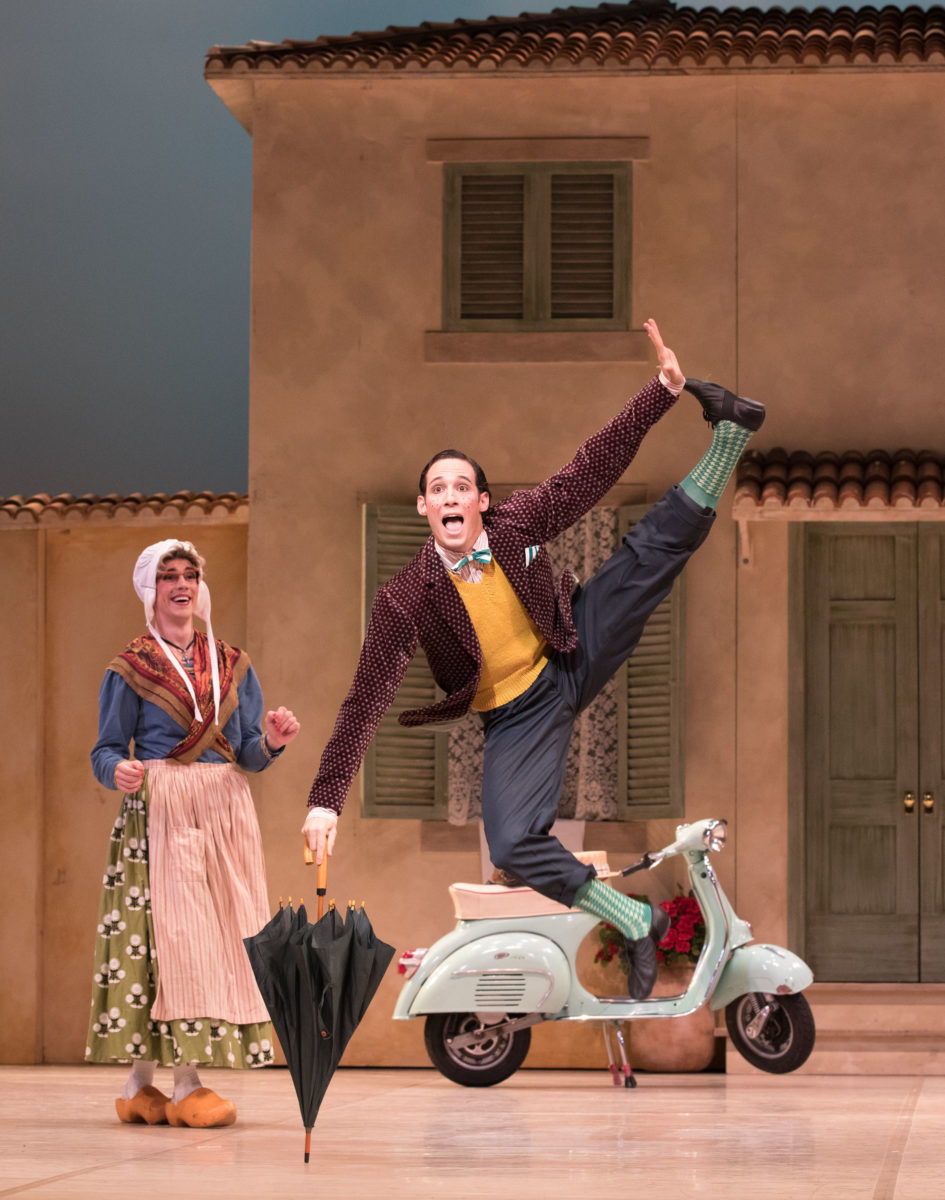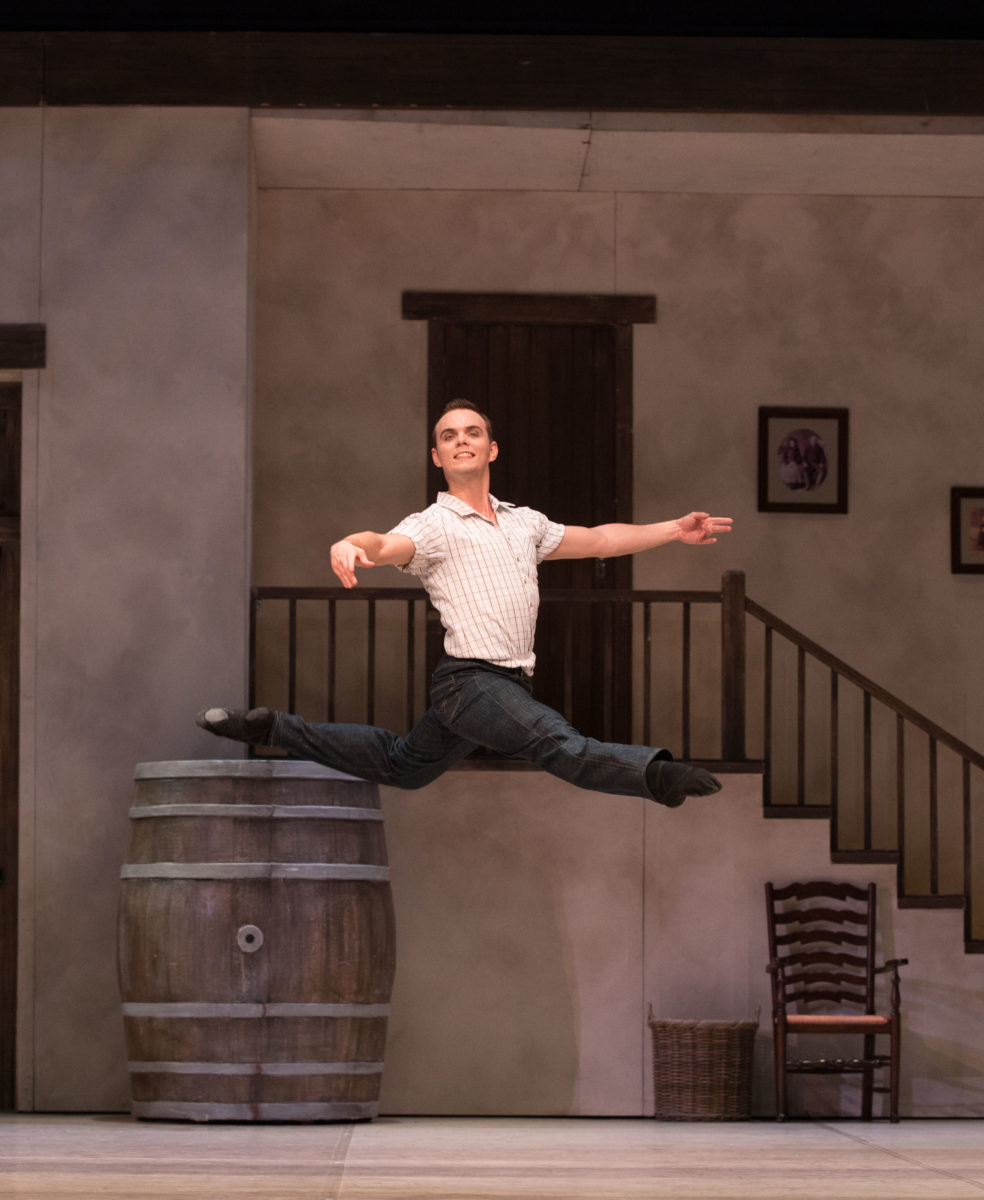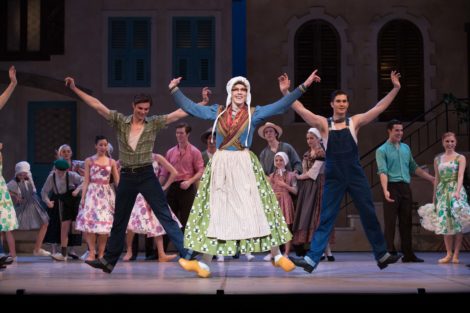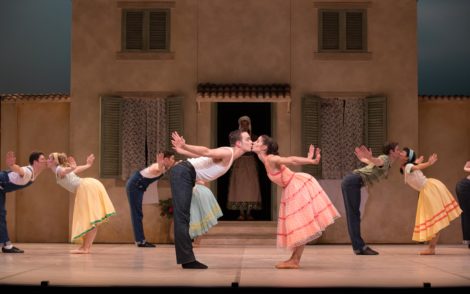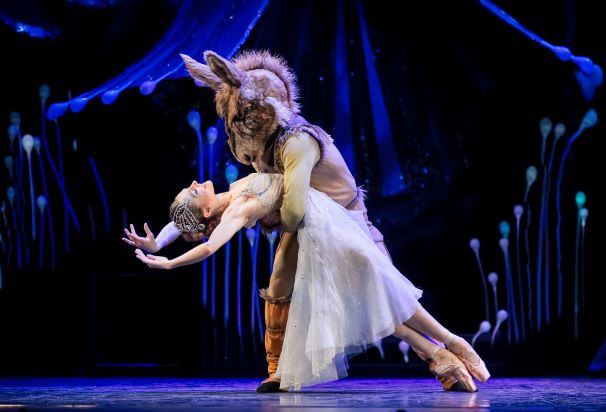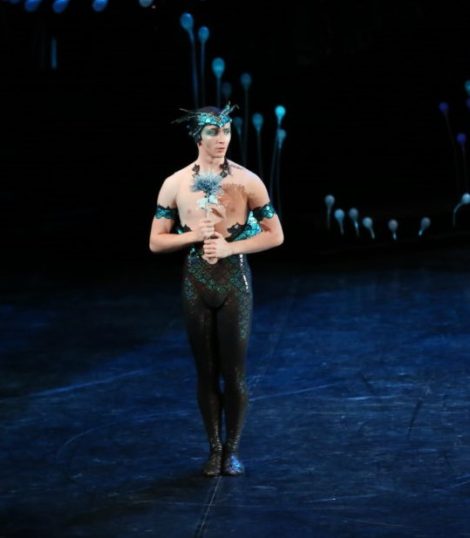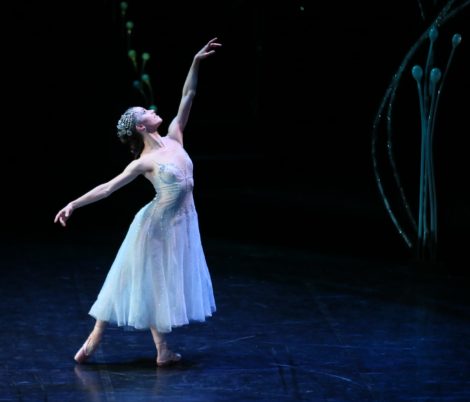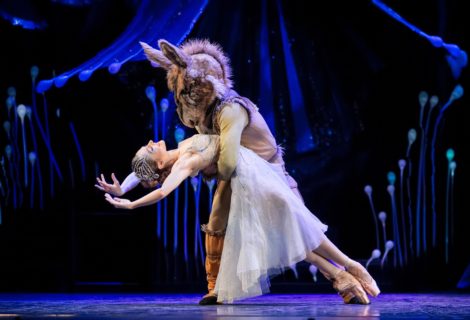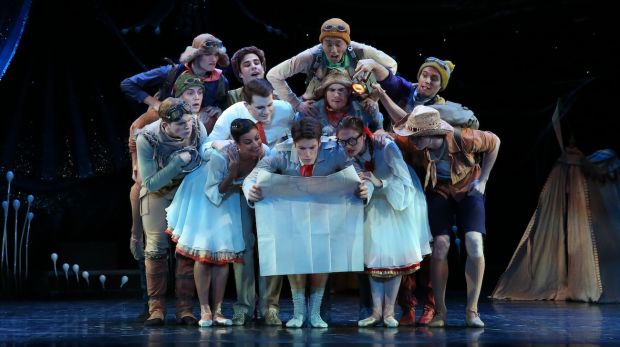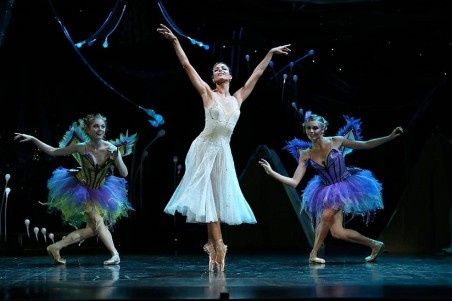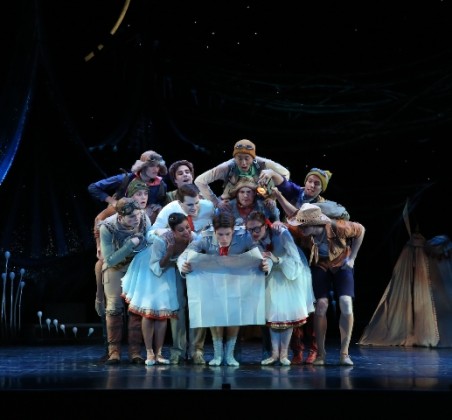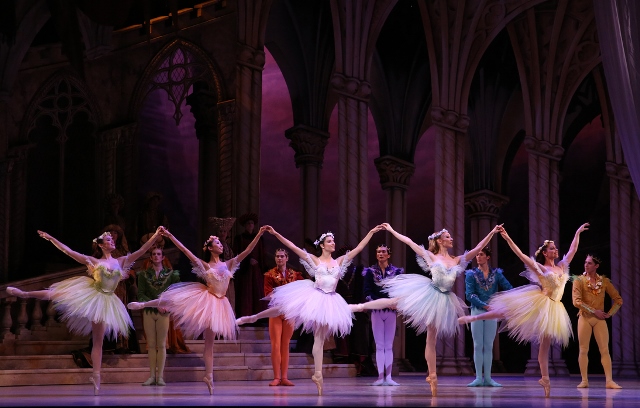31 March 2018 (matinee), Playhouse, Queensland Performing Arts Centre, Brisbane
Queensland Ballet’s La Bayadère is not the Bayadère you may have seen before. Choreographer Greg Horsman has reimagined the old story and created a new narrative set in India at the time of the British raj. The change is clear immediately one enters the theatre where a striking front cloth from designer Gary Harris is in place. It features a head and shoulders portrait of a young Queen Victoria, set against a background of two opposing armies and a sketchy map of parts of India.
The love triangle between Solor, Nikiya the temple dancer, and Gamzatti, which we know from the Makarova version, remains. But Gamzatti is now Edith, daughter of the Governor General of India in the British era. Edith kills Nikiya, danced by Lina Kim at this performance, in a fit of jealous rage. But she does it with a dagger rather than a snake concealed in a basket. The opium dream—the Kingdom of the Shades—also remains but is better contextualised. The last act is suitably dramatic, but without the almighty crash of the temple. Instead Solor, in a drunken state after a boisterous wedding celebration, strangles Edith on their marriage bed and is then shot by Edith’s military supporters. The love of Solor and Nikiya continues in an apotheosis.
The story is told well, in fact it is quite gripping, edge-of-the-seat material most of the time. It makes so much more sense to a contemporary audience, despite the odd occasion where I had to wonder whether there was a slight (unnecessary) pantomime element to the portrayal of the British raj. I also wondered about the Indian references in the choreography but I was assured Horsman had consulted and researched.
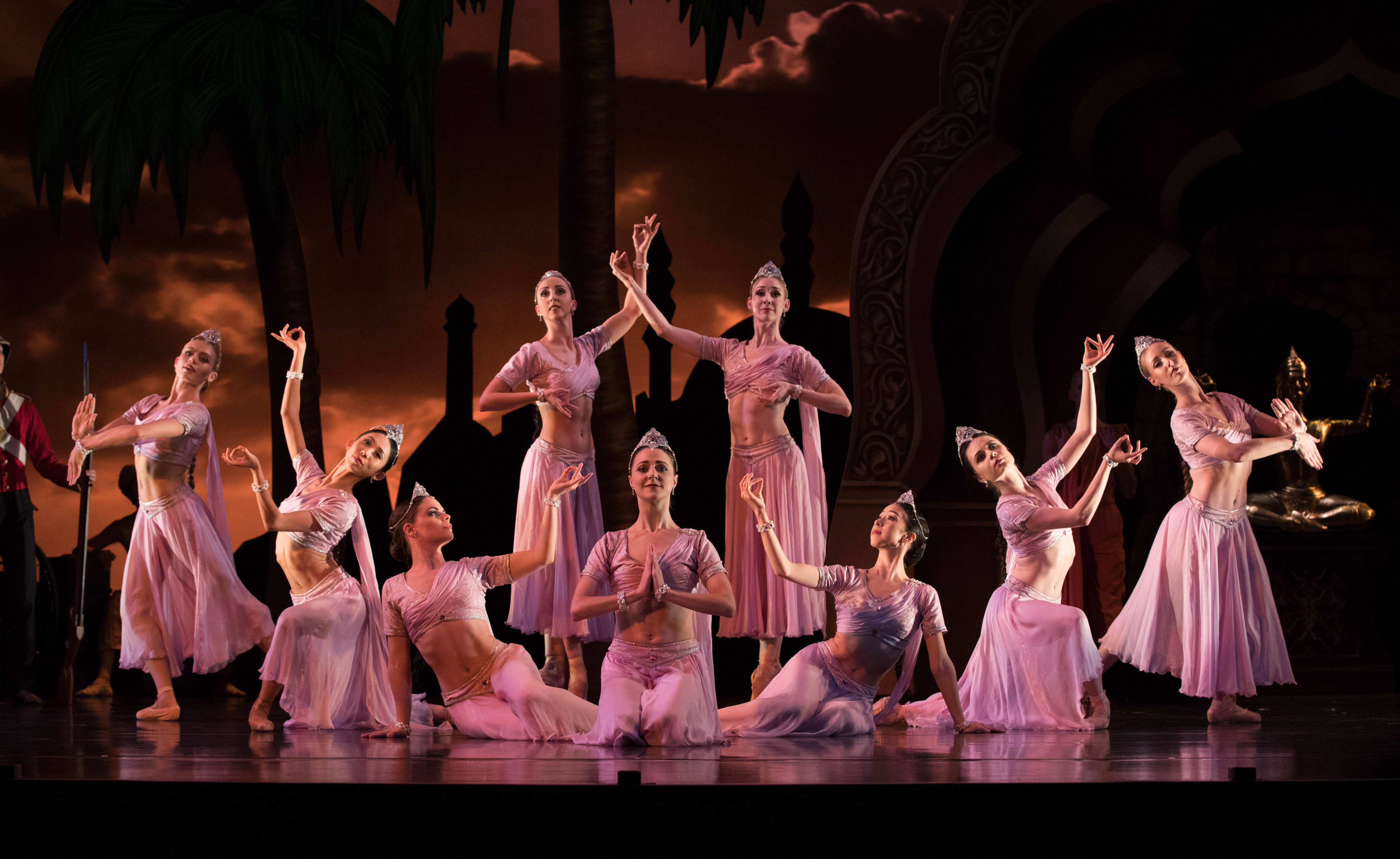
One of the best scenes to my mind was that in the opium den, which immediately preceded the drug-induced dream Solor has of the spirit(s) of Nikiya, which we know as the Kingdom of the Shades scene. The den was filled with an assortment of drug dealers and half-drugged customers, including Solor. It set the scene so well for what followed. We returned to the den as the dream of Solor faded and we watched as he was hunted down, found in the den (after efforts by the dealers to hide him failed) and brought back to the reality of his impending marriage to Edith. The golden full moon and star cloth of Harris’ set was instantly arresting and his tutus for the Shades—a half tutu with a choli-style top—made brilliant sense.
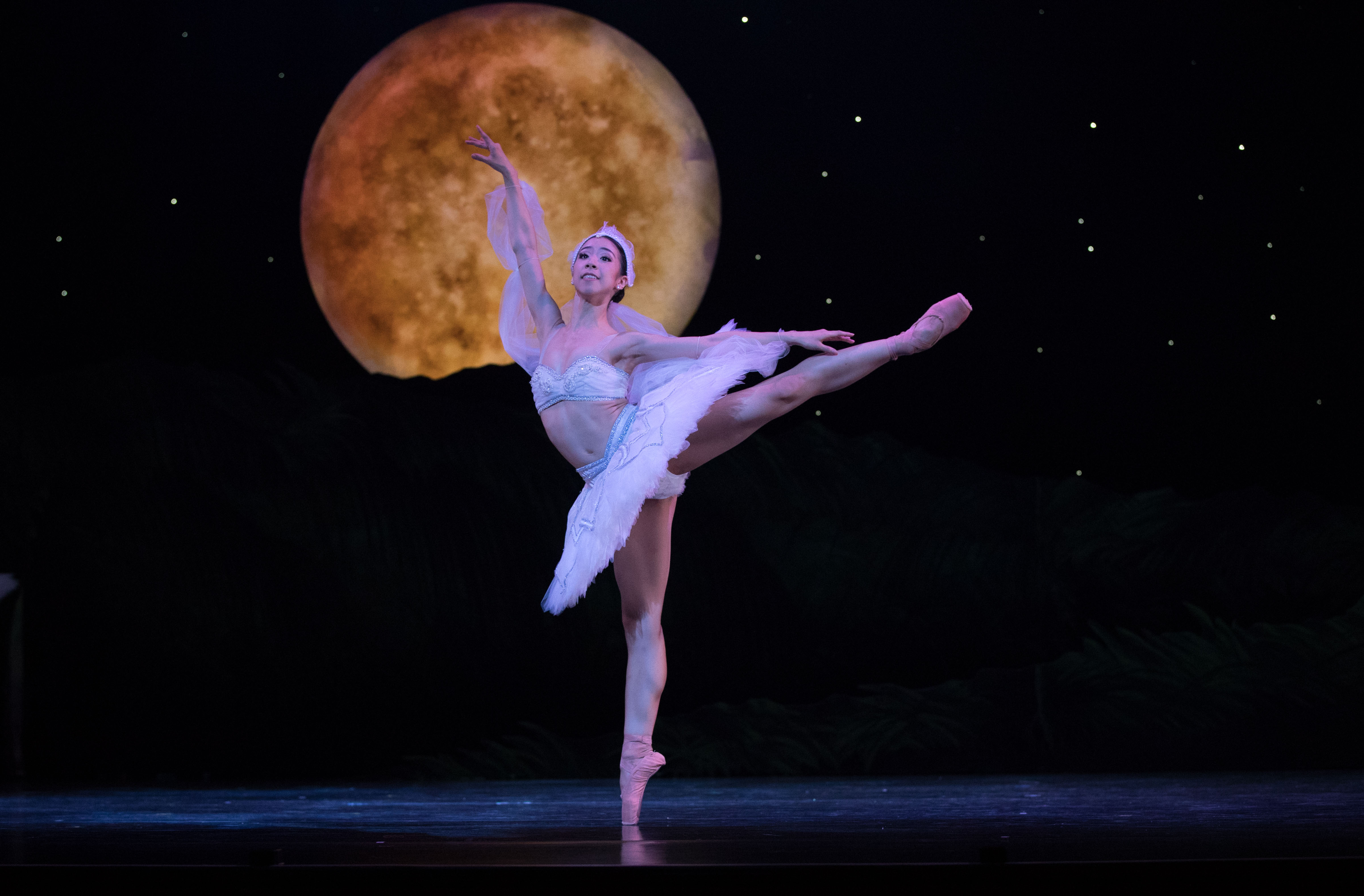
The very best dancing on this occasion came from one of the newest members of Queensland Ballet, Suguru Otsuka, as the leading temple dancer in the final act. Choreographically his solo demanded some spectacular turns and leaps and was set so that the dancer appeared to be an Indian statue (of perhaps a Shiva figure) come to life. Otsuka gave a courageous, breathtaking performance and is definitely a dancer to watch.
I missed some of the dancing in the wedding scene because my attention was drawn frequently to the increasing drunkenness of Solor, who was danced by Kohei Iwamoto. While he danced and partnered well throughout the ballet, my eyes were so often on his acting at this stage as he dismissed advances by Edith and was consumed with his own issues.
This Bayadère was inspirational especially in the way the story was cleverly reimagined and so beautifully redesigned, but yet retained the essence of the storyline. I was at a performance where live music was not available but nevertheless, from the recording made by the Queensland Symphony Orchestra, it was clear that musical director Nigel Gaynor had done a great job with the score, adding Indian overtones by changing a major key to a minor one and by including some non-Western instruments.
The performance I attended also marked the last performance in a major role by company soloist Teri Crilly who is retiring from dancing and taking an administrative position with Queensland Ballet. She danced Edith at this performance and at the end of the show was farewelled onstage by Li Cunxin and the cast, and was given an exceptional ovation by the audience.
Michelle Potter, 2 April 2018
Featured image: Artists of Queensland Ballet in La Bayadère, 2018. Photo: © David Kelly
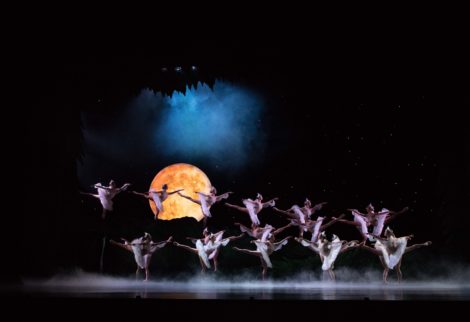
NOTE: Below is an image of Gary Harris’ frontcloth, taken from the program (and cropped slightly). This is not an official media image but the cloth was too striking to leave out.
